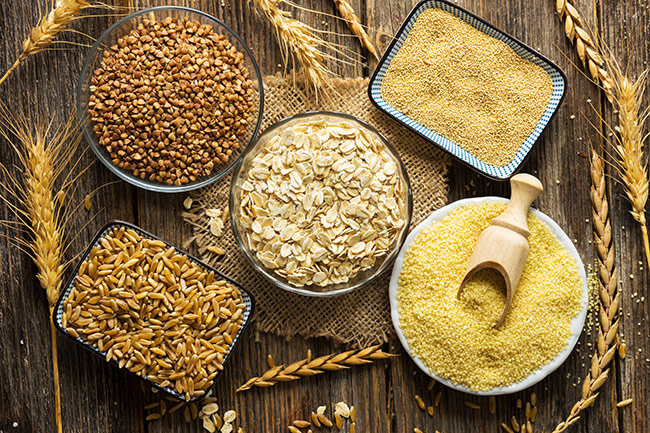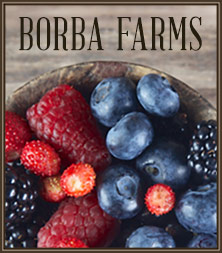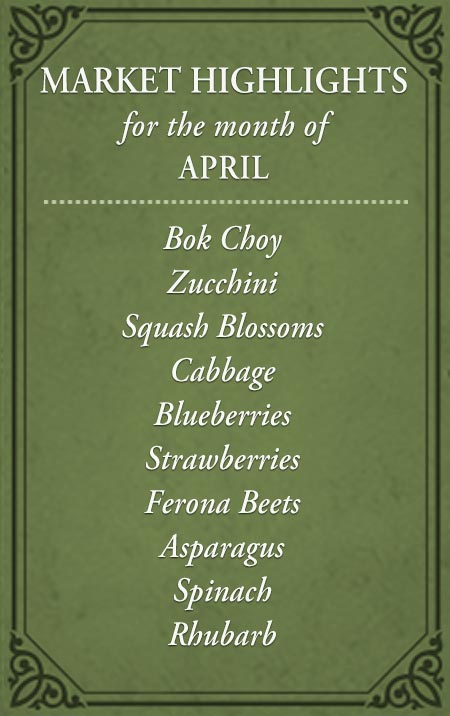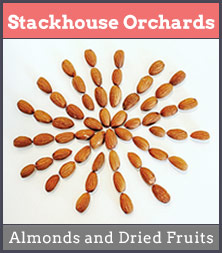Whole grains are nutrient-dense foods packed with fiber, protein, vitamins, and minerals. They’re also a healthier alternative to refined carbohydrates. If reaching the recommended three servings a day feels daunting, try simple swaps: add grains to soups, salads, or main dishes, or enjoy them as a warm breakfast cereal.
Love crunchy textures like popcorn? Many whole grains can be “popped” too. Just heat a heavy-bottomed skillet (like cast iron), add the grains, and watch them puff up in minutes. Sprinkle them over salads or eat them as a light, crunchy cereal.
What Do Whole Grains Taste Like?
Amaranth: Tiny seeds with a peppery, molasses-like flavor and a hint of nuttiness.
Barley: Creamy and neutral in taste; excellent in soups or as a risotto substitute. High in fiber.
Bulgur: Precooked, cracked wheat available in fine to coarse grinds. Quick to prepare—just soak briefly.
Kamut & Spelt: Ancient forms of wheat with a hearty chew and digestible gluten. Similar in taste to wheat berries.
Oats: Whether rolled, steel-cut, or whole groats, oats are mild, versatile, and fiber-rich.
Quinoa: Light, crunchy, and slightly nutty. Delicious alone or stirred into batters, salads, or enjoyed with milk and maple syrup. A good source of both protein and fiber.
Rye: Known for bread and crackers, but whole rye berries add a chewy, wheat-like texture to salads.
Sorghum: Slightly sweet and nutty. Use as gluten-free flour, cook whole for salads, or pop like cereal. High in fiber and protein.
Wheat Berries: Chewy, hearty, and fiber-rich. Add to salads, soups, or bread dough for texture.
Wild Rice: Actually an aquatic grass seed. Gluten-free with a bold, nutty, earthy flavor. Grown mainly in California and Minnesota.
How to Cook Whole Grains
Cooking whole grains is much like making rice: simmer in water or broth with a pinch of salt until the liquid is absorbed. Cooking times vary depending on the grain, so keep a reference handy. (Tip: Print this chart below and tape it to your pantry door for quick access.)
Whole Grain Cooking Chart
| Dry Grain 1 cup | Liquid Cups | Cooking Time | Yield (Cups) |
| Amaranth | 2 | 20 minutes | 2 ½ |
| Barley (hulled) | 3 | 40 minutes | 3 ½ |
| Brown rice, long grain | 2 | 1 hour | 3 |
| Brown rice, short grain | 2 | 50 minutes | 3 |
| Buckwheat | 2 | 1 hour | 2½ |
| Cornmeal (fine) | 4 | 15 minutes | 2 ½ |
| Cornmeal (coarse) | 4 | 30 minutes | 2 ½ |
| Couscous | 2 | 10 minutes | 2 |
| Farro | 2 ½ | 25-40 minutes | 3 |
| Kamut* | 4 | 45-60 minutes | 3 |
| Millet | 2 ½ | 25 minutes | 3 ½ |
| Oats (groats) | 2 | 1 1/2 hours | 3 ½ |
| Oats (rolled) | 2 ½ | 20 minutes | 3 ½ |
| Oats (steel cut) | 3 | 30 minutes | 3 ½ |
| Quinoa** | 2 | 15 minutes | 2 ¾ |
| Spelt | 3 ½ | 50 minutes | 3 ½ |
| Sorghum | 4 | 25-40 minutes | 3 |
| Wheat (berries) | 3 | 45 minutes | 2 ½ |
| Wheat (bulgur) | 2 | 15 minutes | 2 ½ |
| White rice, long grain | 2 | 30 minutes | 3 |
| White rice, short grain | 2 | 20 minutes | 3 |
| Wild rice | 2 | 40 minutes | 4 |
* Soak overnight **Rinse very well before cooking
Adding additional flavor is easy, too — sauteed onions, mushrooms, dried fruit, and nuts all make delicious additions to whole grains to make a pilaf. The addition of olive oil or butter adds richness. Polenta (coarse ground cornmeal) tastes richer made with milk or cream added to the cooking liquid of stock or water.
Time Saving Tips
- Pre-soaking grains will shorten the cooking time. Simply combine the grain with the amount of liquid in the recipe for a few hours before cooking. When ready to cook, add extra water if necessary, then cook.
- Make big batches of whole grains to keep on hand. Grains keep 3-4 days in the refrigerator (or freeze) and can be easily re-warmed with a little additional water or broth. Use grains for cold grain salads, warm up as a breakfast cereal or add grains to soup.
- Use grains for cold grain salads, warm up as a breakfast cereal or add grains to soup. Grains also make an excellent addition to baking, such as quick bread or muffins.
Storage
Whole grains contain natural oils in their germ, which can spoil if exposed to light, heat, or moisture. To preserve freshness, always store grains in airtight containers with tight-fitting lids, and label them with the purchase date.
-
Intact Whole Grains: When properly stored, whole grains will keep for up to 6 months in a cool, dry pantry or up to 1 year in the freezer.
-
Whole Grain Flours and Meals: Because the bran layer has been broken and the grains are exposed to oxygen, flours and meals spoil faster. Store in airtight containers for 1–3 months in the pantry or up to 6 months in the freezer.
Buying Tips
-
Choose grains that are well packaged and tightly sealed. Always check the sell-by date.
-
If buying from bulk bins, make sure the retailer has a high turnover so you’re getting the freshest stock.
-
Be mindful of spoilage: whole grains have a higher oil content and can turn rancid. If they smell musty, stale, or “off,” don’t use them.
-
Purchase only what you can reasonably use within a couple of months to ensure peak freshness and flavor.
RECIPES: Honey Pear Bran Muffins, Kamut Granola with Dried Apricots, Farro Pilaf, Farro Risotto with Summer Squash, Tomatoes, Onions, Pesto Farro, Farro with Green Onions, Bulgur Wheat, Roasted Butternut Squash and Cranberry Salad, Wheat Berry and Roasted Root Vegetables Salad with Microgreens, Pumpkin Quinoa Muffins, Lemon Barley Water



























